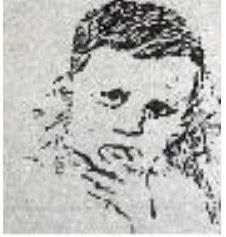Shanku Samajdar, a 12 year old Hindu boy, became the first martyr (Shaheed) of the Bangladesh Liberation War byy sacrificing life on the 3rd of March, 1971 while taking part in the massive non-cooperation movement rally in Rangpur city.
The supreme sacrifice of this Hindu boy, a class six student, triggered rage among the mass and the movement became more intense and organised.
It all began with Sheikh Mujibur Rahman calling for a nationwide non-cooperation and strike on the 2nd and 3rd of March, 1971.
As per the call of Mujibur Rahman, Bengalis of all religions began an unprecedented non- cooperation movement against the Pakistani regime and a curfew was declared on the 3rd of March.
On the 3rd of March, people from all walks of the society including youths, students, farmers and labourers, men and women, Hindus and Muslims of Rangpur organized a huge procession that began from Katchari Bazar point, defying the curfew.
At about 9 am in the morning, Shanku along with elder brother Kumaresh Samajdar Babu, a student of class eight, came out from their house and joined the non-cooperation movement rally as it passed by their neighborhood of Guptapara area.
Hundreds of brave Bangalis paraded the streets defying the curfew and chanted the slogans,
“Tomar Amar Thikana- Padma- Meghna- Jamuna”, (Our home, yours and mine – Padma Meghna Jamuna),
“Tomar Neta, Amar Neta-Sheikh Mujib, Sheikh Mujib”,(Your leader, our leader, Sheikh Mujib Sheikh Mujib),
“Yahiyar Mukhe Lathi Maro-Bangladesh Swadhin Karo”(Kick Yahya in the face, make Bangladesh free again!)
Student leaders from different areas organised the spontaneous rally that was also attended by the then Awami League leader and MLA Siddique Hossain along with hundreds of grassroot level leaders and workers.
As the rally kept marching, young Shanku spotted a Urdu signboard and picked up a stick to smash it. Seeing the boy smashing the Urdu signboard, a pro-Pakistani, Bihari Muslim named Sarfaraz Khan opened gunfire at the rally and particularly at Shanku who was now separated from the rally as he was breaking the signboard. The bullet hit young Shanku and he succumbed to his injuries on the way to the hospital at around 9.30 am.
Shanku’s ailing mother Dipali Samajdar, 90, now living in “Shanku Villa” at Kamal Kachhna area, says Shanku is always with her and she feels proud of her heroic son who embraced martyrdom on the 3rd of March, 1971 for the Independence of Bangladesh.
But what saddens her is the fact that though the locals acknowledge Shanku’s martyrdom and respect her, the government of Bangladesh does not provide her any help, nor do they give any recognition to Shanku, the first martyr of the 1971 Bangladesh Liberation War. Is it because he is a Hindu, that he cannot be given the honor of a trailblazer? Would it anger the radicals? Would it stir up the popular Islamic conspiracy theory that the Liberation War was a plot of India and the Indian barkers of Bangladesh, the Hindus? Is this why G.C.Dev, Dhirendranath Datta, Ranadaprasad Shaha, Jyotirmoy Guha Thakurta are not given the same respect as Munier Chowdhury or Selina Pervin? Maybe. But just like the other Hindu minorities of Bangladesh, Shanku’s mother Dipali Samajhdar is content with the minimal. She just wants recognition for her brave son Shanku, who was martyred at the age of 12.
BSS, District Muktijoddha Commander Mosaddek Hossain Bablu says, ‘Shanku was killed at around 9.30 am by the Beharis to become the country’s first martyr though many other heroic sons embraced martyrdoms in the country on March 3 in 1971.’
And thus, the people of Rangpur lead the War of Independence on March 3 by sacrificing their lives and raising the National Flag.
“Bangabandhu in his historic and unprecedented speech of Independence on March 7, 1971 at the then Race Course Maidan mentioned the death of the heroic sons including Shanku, who made Rangpur proud by laying down his life for the nation,” Bablu added.
To mark the day, Shaheed Shanku Smriti Parishad and many other organisations have been observing the Shaheed Shanku Day on March 3 every year in the city to pay their due respect and tribute to the first martyr of the Bangladesh Liberation War.
